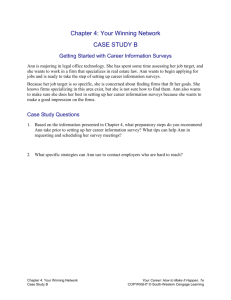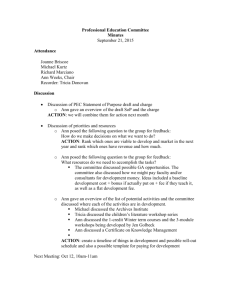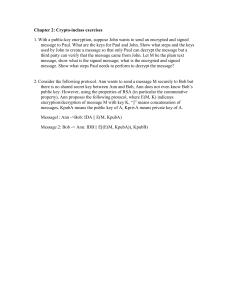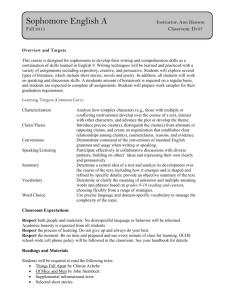USE OF AN ARTIFICIAL NEURAL NETWORK (ANN) TO ASSESS
advertisement
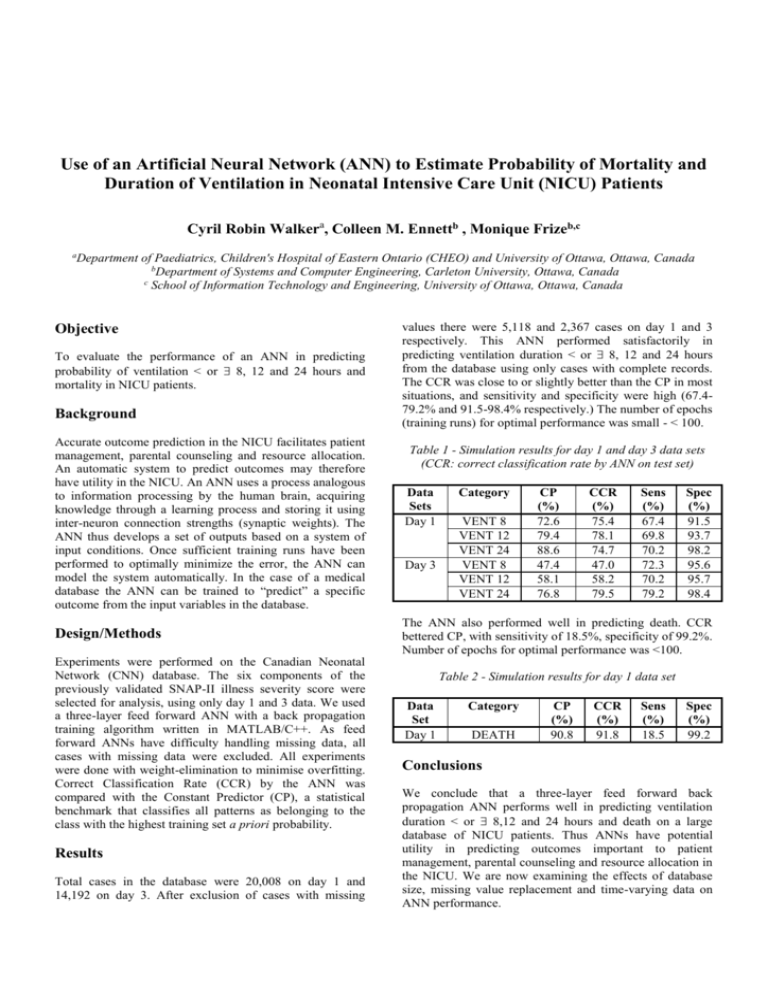
Use of an Artificial Neural Network (ANN) to Estimate Probability of Mortality and Duration of Ventilation in Neonatal Intensive Care Unit (NICU) Patients Cyril Robin Walkera, Colleen M. Ennettb , Monique Frizeb,c a Department of Paediatrics, Children's Hospital of Eastern Ontario (CHEO) and University of Ottawa, Ottawa, Canada b Department of Systems and Computer Engineering, Carleton University, Ottawa, Canada c School of Information Technology and Engineering, University of Ottawa, Ottawa, Canada Objective To evaluate the performance of an ANN in predicting probability of ventilation < or 8, 12 and 24 hours and mortality in NICU patients. Background Accurate outcome prediction in the NICU facilitates patient management, parental counseling and resource allocation. An automatic system to predict outcomes may therefore have utility in the NICU. An ANN uses a process analogous to information processing by the human brain, acquiring knowledge through a learning process and storing it using inter-neuron connection strengths (synaptic weights). The ANN thus develops a set of outputs based on a system of input conditions. Once sufficient training runs have been performed to optimally minimize the error, the ANN can model the system automatically. In the case of a medical database the ANN can be trained to “predict” a specific outcome from the input variables in the database. Design/Methods Experiments were performed on the Canadian Neonatal Network (CNN) database. The six components of the previously validated SNAP-II illness severity score were selected for analysis, using only day 1 and 3 data. We used a three-layer feed forward ANN with a back propagation training algorithm written in MATLAB/C++. As feed forward ANNs have difficulty handling missing data, all cases with missing data were excluded. All experiments were done with weight-elimination to minimise overfitting. Correct Classification Rate (CCR) by the ANN was compared with the Constant Predictor (CP), a statistical benchmark that classifies all patterns as belonging to the class with the highest training set a priori probability. Results Total cases in the database were 20,008 on day 1 and 14,192 on day 3. After exclusion of cases with missing values there were 5,118 and 2,367 cases on day 1 and 3 respectively. This ANN performed satisfactorily in predicting ventilation duration < or 8, 12 and 24 hours from the database using only cases with complete records. The CCR was close to or slightly better than the CP in most situations, and sensitivity and specificity were high (67.479.2% and 91.5-98.4% respectively.) The number of epochs (training runs) for optimal performance was small - < 100. Table 1 - Simulation results for day 1 and day 3 data sets (CCR: correct classification rate by ANN on test set) Data Sets Day 1 Day 3 Category VENT 8 VENT 12 VENT 24 VENT 8 VENT 12 VENT 24 CP (%) 72.6 79.4 88.6 47.4 58.1 76.8 CCR (%) 75.4 78.1 74.7 47.0 58.2 79.5 Sens (%) 67.4 69.8 70.2 72.3 70.2 79.2 Spec (%) 91.5 93.7 98.2 95.6 95.7 98.4 The ANN also performed well in predicting death. CCR bettered CP, with sensitivity of 18.5%, specificity of 99.2%. Number of epochs for optimal performance was <100. Table 2 - Simulation results for day 1 data set Data Set Day 1 Category DEATH CP (%) 90.8 CCR (%) 91.8 Sens (%) 18.5 Spec (%) 99.2 Conclusions We conclude that a three-layer feed forward back propagation ANN performs well in predicting ventilation duration < or 8,12 and 24 hours and death on a large database of NICU patients. Thus ANNs have potential utility in predicting outcomes important to patient management, parental counseling and resource allocation in the NICU. We are now examining the effects of database size, missing value replacement and time-varying data on ANN performance.
